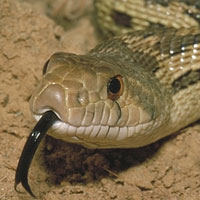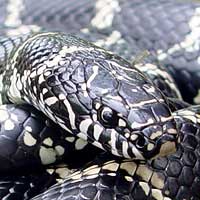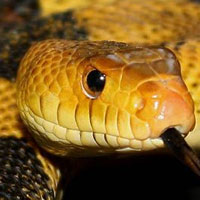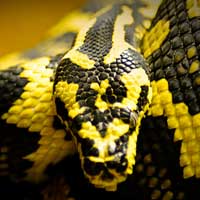Everything You Need to Know About the Bullsnake
The scientific name of the Bullsnake is Pituophis catenifer sayi, a subspecies of the gopher snake. It belongs to the Colubridae family, which is the largest snake family and includes many non-venomous species.
Scientific Name: Pituophis catenifer sayi
Snake Family: Colubridae
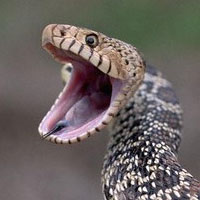
An Introduction to the Bullsnake
The Bullsnake (Pituophis catenifer sayi) is one of North America’s largest non-venomous snakes, known for its striking patterns and impressive size. A subspecies of the gopher snake, it is highly adaptable and plays a vital role in controlling rodent populations. Its docile temperament and ease of care make it a popular choice among reptile enthusiasts. In this guide, we’ll explore the Bullsnake’s natural habitat, diet, behavior, and care requirements in detail.
The Natural Habitat of the Bullsnake
The Bullsnake inhabits a variety of environments across North America, including grasslands, prairies, forests, and arid deserts. Its adaptability allows it to thrive in areas with sandy soil, which it uses for burrowing. These snakes are also often found near agricultural fields where rodents are plentiful.
When keeping a Bullsnake in captivity, replicating its natural habitat is crucial. Consider the following factors:
- Temperature: Maintain a gradient of 75-85°F, with a basking area reaching 90°F.
- Substrate: Use aspen shavings, sand, or coconut husk to allow burrowing.
- Enclosure Size: Provide a spacious enclosure, ideally 6x3x2 feet for adults.
| Habitat Feature | Requirement |
|---|---|
| Temperature Gradient | 75-90°F |
| Humidity | 30-50% |
| Enclosure Size | 6x3x2 feet minimum |
What Do Bullsnakes Eat?
Bullsnakes are carnivorous and primarily feed on rodents, making them valuable for pest control. In the wild, their diet also includes birds, eggs, and lizards. In captivity, providing a diet that mimics their natural preferences is essential for their health.
Feeding tips:
- Prey Size: Offer appropriately-sized rodents, such as mice or rats, that are no larger than the snake’s midsection.
- Frequency: Feed juveniles every 5-7 days and adults every 10-14 days.
- Prey Type: Use frozen-thawed prey to avoid injury to the snake.
Behavior and Temperament of the Bullsnake
Bullsnakes are known for their bold and curious nature. While they can be defensive in the wild, they are generally docile when handled regularly in captivity. Their hiss, often mistaken for a rattlesnake’s warning, is a defensive mechanism and not a sign of aggression.
Key behavioral traits:
- Activity Level: Diurnal, active during the day.
- Defensive Behaviors: May hiss or coil when threatened but rarely bite.
- Adaptability: Quickly acclimates to handling with consistent interaction.
Health and Lifespan of the Bullsnake
With proper care, Bullsnakes can live 20-25 years in captivity. Ensuring optimal conditions and monitoring their health is crucial for their longevity.
Common health issues include:
- Respiratory Infections: Caused by incorrect humidity or temperature levels.
- Parasites: Regular checks and quarantine for new snakes can prevent infestations.
- Shedding Problems: Provide a humid hide to assist with incomplete sheds.
Reproduction and Breeding of the Bullsnake
Bullsnakes are oviparous, laying eggs rather than giving live birth. Breeding typically occurs in the spring, with females laying eggs in early summer. The incubation period is influenced by temperature and humidity levels.
Breeding facts:
- Breeding Season: Spring (March to May).
- Clutch Size: 6-20 eggs per clutch.
- Incubation: Eggs hatch in 60-75 days at temperatures of 80-85°F.
How to Handle and Care for a Bullsnake
Bullsnakes are generally tolerant of handling and can become accustomed to human interaction with regular, gentle handling. Proper care and consistent interaction will ensure a healthy and stress-free snake.
Tips for handling and care:
- Handling Frequency: Handle 1-2 times per week to build trust.
- Support: Always support the snake’s body fully during handling.
- Cleaning: Spot-clean daily and perform a thorough enclosure cleaning monthly.
Other Snakes In This Species
 Black-necked Garter Snake
Black-necked Garter Snake Blue Striped Garter Snake
Blue Striped Garter Snake Bluestripe Ribbon Snake
Bluestripe Ribbon Snake Bullsnake
Bullsnake Butlers Garter Snake
Butlers Garter Snake Checkered Garter Snake
Checkered Garter Snake Eastern Garter Snake
Eastern Garter Snake Mexican Garter Snake
Mexican Garter Snake New Mexican Garter Snake
New Mexican Garter Snake Northwestern Garter Snake
Northwestern Garter Snake Peninsula Ribbon Snake
Peninsula Ribbon Snake Plains Garter Snake
Plains Garter Snake Red-sided Garter Snake
Red-sided Garter Snake Wandering Garter Snake
Wandering Garter Snake Western Black Garter Snake
Western Black Garter Snake Western Ribbon Snake
Western Ribbon Snake



